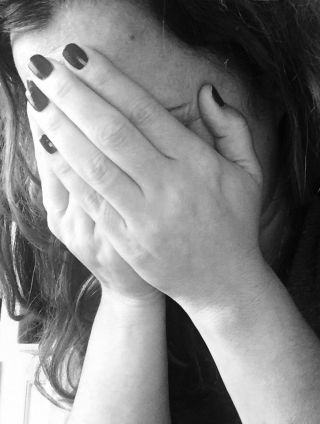Grief
What Is Ambiguous Grief and How to Begin Healing
Death isn’t a prerequisite to grief—common life events activate grief ambiguity.
Posted May 26, 2023 Reviewed by Davia Sills
Key points
- Without societal norms to engage, a loss without a physical death activates an ambiguous grieving process.
- Shame and embarrassment may prevent people from sharing about their loss.
- Being able to recognize ambiguous grief is an important step in healing.
Grief is a universal experience. Regardless of geography, socio-economic status, age, or gender, humans grieve when a loved one dies. But what about loss that changes or ends the relationship without a physical death? For example, the loss of a child to substance abuse disorder, a parent to cognitive decline, a spouse to divorce, a sibling to estrangement, or a dear friend to mental illness. Though most of us will experience the pain of grieving a living loved one at least once in our lifetime, few know this pain has a name, much less how to heal. But it doesn’t have to be this way.
How Do We Grieve When Our Loved One Has Not Died but Is No Longer in Our Lives as They Once Were?
This was one of the many questions I sought to answer when seeking to understand my own pain brought on by a sudden divorce. The ache of losing my beloved marriage was profound; I stopped eating, I couldn’t sleep, and depression enveloped me. For reasons I only understood much later, I initially kept my devastation private, sharing the news only with my newly enlisted therapist and one trusted friend. Three months later, with their help (and the right combination of prescription medications), I finally informed my family and friends.
After nearly two decades as a wife, the title no longer applied to me, and detaching from this part of my identity only intensified an already destabilizing time. I struggled to understand the new part I was playing in a production in which I’d never wanted to be cast. I wasn’t a wife, and I wasn’t a widow—though I sometimes dreamed of playing the part, accepting rounds of heartfelt condolences from my audience and gratefully receiving their ovation as an acknowledgment of my grief.
But the honor of this designation (and all it symbolizes) didn’t apply to me because, of course, there was no physical death. Which, in turn, meant there was no obituary, no funeral, no eulogy, no sympathy cards, and no cache of casseroles in my freezer. Without these traditional societal norms to engage and in which to participate, my loss felt minimized, and my deep grief under-recognized. It was in this strange place of reconciling who I am with who I had been that I became consumed with an overwhelming desire to heal.
How Do We Heal What We Can’t Name?
I spent hours perusing journal articles, questioning my therapist, reading countless books, and even writing to authors. My initial search yielded plenty of resources for the newly divorced, as well as a plethora of information about dying, death, and grief. However, I was unable to find the exact book I was seeking—one that could guide me through my journey and provide answers to my now expanded question: How do we grieve and heal when our loved one has not died but is no longer in our lives as they once were?
My search led me to the work of renowned family therapist Dr. Pauline Boss. In the 1970s, while treating spouses of missing-in-action military members, Boss recognized commonalities in their experience and coined the term “ambiguous loss.” She defined it as occurring when there is a physical absence with psychological presence (e.g., a loved one is physically missing or bodily gone) or when there is a psychological absence with a physical presence (e.g., Alzheimer’s and other dementias). Boss discerned that “ambiguous loss differs from ordinary loss in that there is no verification of death or no certainty that the person will come back or return to the way they used to be.” Over the decades, Boss’s pioneering work on ambiguous loss continued, including a book by the same name which has become a resource for academics and practitioners alike.
For me, even Dr. Boss’ impressive body of work and the expanded work of others was close-but-not-quite to that which I was personally seeking. Through further exploration, I identified that it wasn’t my loss that was ambiguous but my grief. I longed for the insights of those who understood the nuances of this ambiguity from starring in the role themselves. Additionally, not unlike the search for my children’s pediatrician, where I wanted a practitioner who was also a parent, I sought insight into this grief from those who had personally experienced it and know the painful reality of life in the nameless space of not-quite-widowhood. Whether I could find these people or not, at my core, I knew I needed to learn how to navigate the ambiguity of my grief.
Have You Experienced Activating Events?
Soon after this realization, I launched a research campaign to answer my own questions: namely, how do we grieve when our loved one is still alive but lost to us? What is the process for grieving when there is not a physical death? What role does hope play in the ambiguous grief process?
Ultimately, this independent study revealed more than I anticipated. Most notably that an overwhelming percentage of the population is likely to experience an ambiguous grieving process at least once in their lifetime, yet few know that this grief has a name, much less how to heal. The life events that activate this anguish are many, some of which include Alzheimer’s disease, addiction, divorce, estrangement, incarceration, indoctrination (think cult or gang), gender identity, and diagnosis (e.g., personality disorders or illness).
If the event that activates the loss is internalized as embarrassing or shameful, grievers may not seek support and often isolate themselves—choosing not to disclose their loss right away, if ever, even to loving family members and friends. One respondent I interviewed indicated that while her ambiguous grief was activated by her spouse’s incarceration, the COVID-19 pandemic had provided two years of welcome cover from an otherwise inevitable disclosure to friends and family. “With a little more luck,” she told me, “He’ll get his time reduced, and I’ll get what I’m hoping for… him to be out before anyone has to know.”
Are You Experiencing Ambiguous Grief?
Being able to name the ambiguous grief process in yourself and others is an important step toward healing. To determine if you or a loved one are experiencing ambiguous grief, consider your answers to the following five statements:
1. You have experienced a significant relationship loss, and your loved one is still living.
2. You have hope that your lost loved one will return to you as they once were or that the relationship will be restored to what it once was.
3. You find memories or the loss of the relationship occupy your thoughts.
4. Your feel disconnected from yourself or others because of the loss.
5. You feel as though this loss has made it difficult to move forward in your life.
Like all loss, the intensity and frequency with which you experience these statements are unique. If you answered yes to two or more, it could be helpful to discuss your loss and how it is impacting you with a professional.

Recovery
While recovery from grief is different for everyone, talking to a therapist or other trusted member of your care team is a courageous step forward. Further, you may find, as I did, that you aren’t alone. Not only do others have similar experiences, but some will understand the nuances of your loss and are navigating the ambiguous grief process, too. Though my terrific therapist helped me to better understand myself, it was in group therapy that I finally felt understood. If this is of interest to you, try searching for your own activating event-specific groups online or ask your therapist or a trusted member of your care team for a referral.
No matter the events that have onset your grief, losing a loved one who is still living is a painful process to endure. My hope is that as more of us learn to identify and name the experience, perhaps ambiguous grief will be better understood as a natural and normal response to losing a loved one who is still living. Even more, maybe this will help reduce the ambiguity of our grieving process and create a healthy space in which to honor our loss, integrate our grief, and begin to heal.




